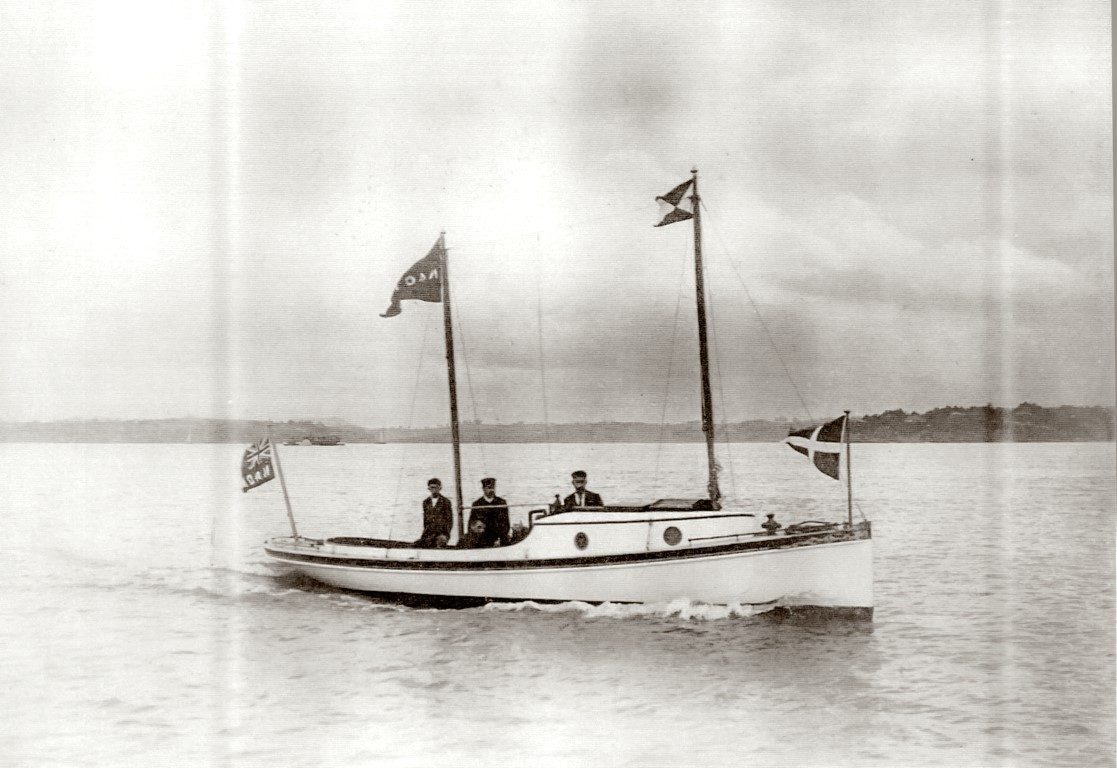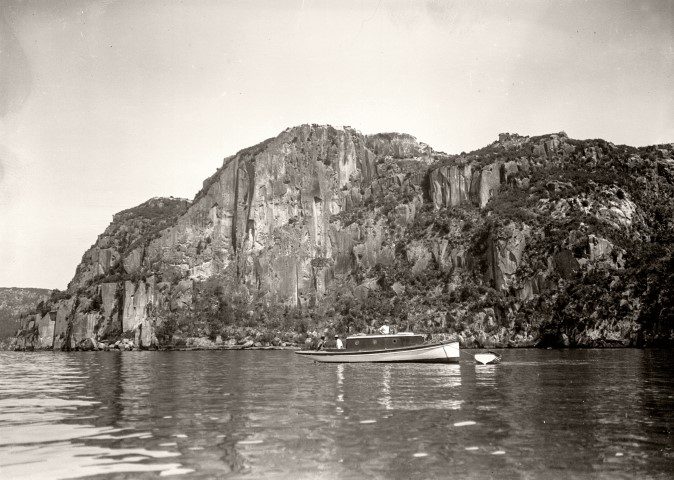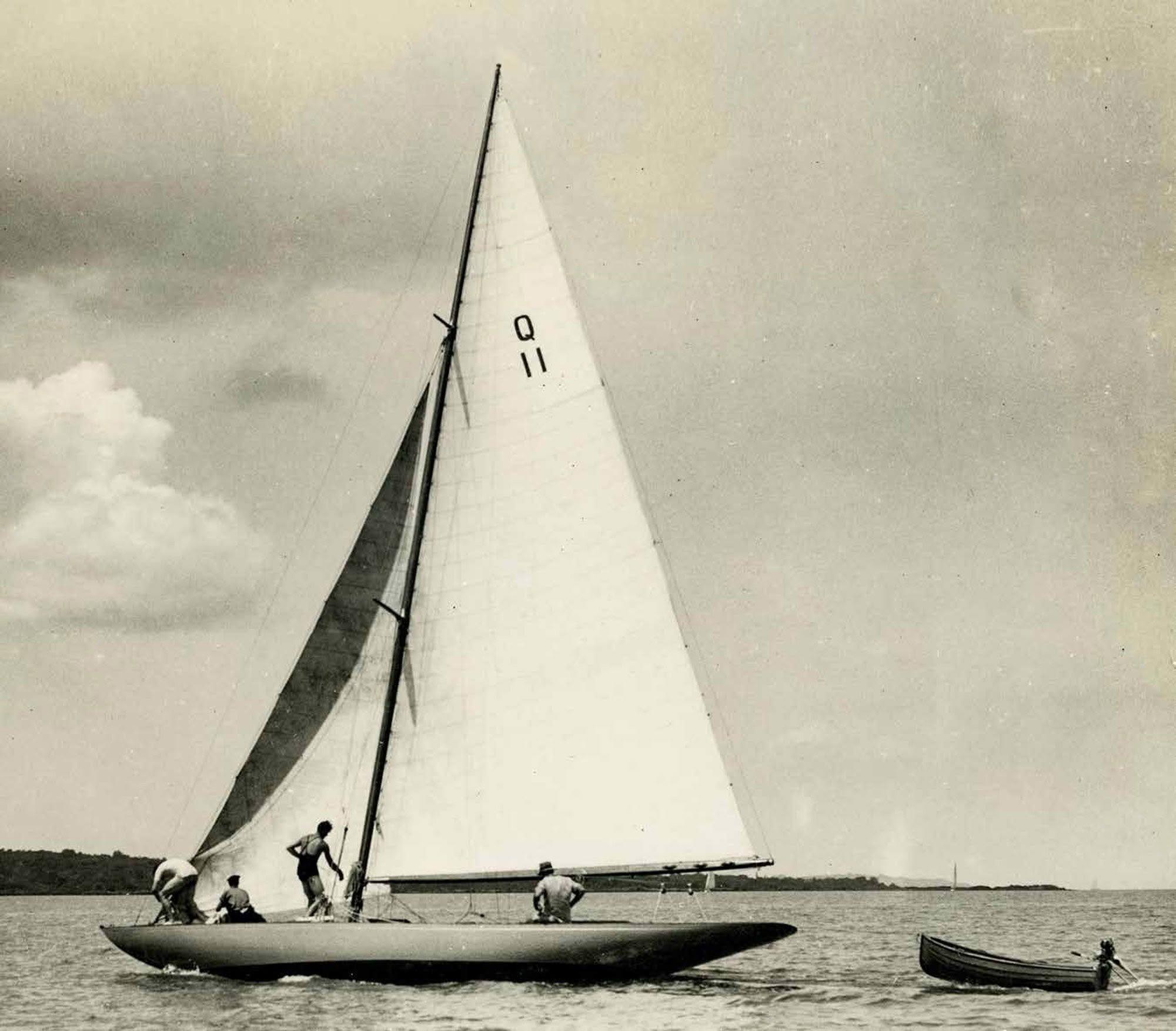

In the first years of the 20th century farmers’ launches became the pick-up trucks of their age. Story by Harold Kidd.
The development of the more remote, roadless farming areas of New Zealand which had water access was made more viable by the new-fangled ‘oil launch’. The petrol engine had just reached a level of maturity, reliability and power and safety – and while admittedly still low – this now made the motor launch manageable and a potent tool for the farmer.
These launches became known as ‘settlers’ launches’ and were built in large numbers for the farming communities around the coasts. Their rise was paralleled by the crop of new dairy factories being built to turn the farmers’ cream they had separated on the farm to butter and cheese.

The new craft ranged from the Far North at Houhora and Awanui, Whangarei, Hokianga, the Northern Wairoa, the Manukau Harbour, the Thames Estuary and up the river networks of the Waihou and the Piako Rivers, Tauranga Harbour, south along the west coast to Raglan, Kawhia, the Mokau, the numerous inlets of the Marlborough Sounds and the rivers and lakes of both islands – practically anywhere there was enough water to float a little launch at high tide and a dairy factory nearby.
They were quickly available from any of the volume launch builders, particularly the Auckland builders Charles Bailey Jr and Bailey & Lowe. Charles Bailey’s yard was in Customs Street; his brother Walter’s yard was a short distance away in Freeman’s Bay. Both were riding the wave of demand for new launches. A side-effect of this boom was the decline in yacht building as yachtsmen rushed to embrace the new technology, in tandem, of course, with the rise of the motorcar.

In November 1903 the Auckland Star reported, “Within the past eight years an industry has sprung up in our midst that has already assumed large proportions and which has given the port of Auckland a world-wide reputation. ….More oil launches have been built in Auckland than in any other place South of the Line, and on a population basis this port possesses a larger fleet than any port in Australasia, while her fleet of auxiliary schooners is the largest in the world.”
Charles and Walter Bailey had been in partnership after the retirement of their father, Charles Sr, in 1893 but, after their glory days of building some of the finest yachts of the Classic period, the business failed in 1899.
Both re-established themselves by 1900, Walter in partnership with their former foreman, Bill Lowe. The craze for oil launches could not have come at a better moment for both firms. Both had excellent design and construction skills and, between them, had the best tradesmen in Auckland, apart from those employed by the Logans.

Charles was always keen to promote himself and his business. Customarily, he spent a great deal of his time in the private bar of the Waverley Hotel in Queen Street, selling his Island schooners, his steam launches and his latest ‘rater’ designs to the influential Aucklanders who also did their business and slaked their thirst there.
Now, sensing the need for a flagship design to satisfy the demand for settlers’ launches, Charles came up with, not only a design, but a brand name, the Milkmaid.
The first of the line was Milkmaid itself, which Charles launched in September 1901. The Ohinemuri Gazette covered the event, “Milkmaid is the appropriate name of a launch recently built to the order of Mr J. Morrison, of Hikutaia, mainly for the purpose of conveying milk from his own and other places to the Netherton Creamery… Mr Morrison explained that the hull of the vessel was built by Mr Charles Bailey, Jr, and the engine was fitted by Messrs W.A. Ryan and Co., the well-known agents for the Union Oil engines. The boat is 30ft long and 6ft 6in beam, and is a beautiful model, in fact, one of the prettiest yet turned out in the colony… The total cost of the boat and engine was £210, and we believe Mr Morrison has made a splendid investment.”

The type was instantly recognisable and looked good to 1901 eyes as it was a development of the little steam launches that were common around the waterfront, but not practical for the farmer because, firstly, a large portion of the hulls were taken up with heavy boilers, the engine and the stokehold and, secondly, they required a crew of two, one with a steam ticket. The petrol engine and its fuel tank had a fraction of that weight and bulk and the oil launch could be operated by a single man with no qualifications.
Essentially the Milkmaids came in various dimensions depending on the carrying capacity the farmer needed. They were generally heavily-built, often triple-skin diagonal (in heart kauri of course), plumb-stemmed with a nice sheer to a short but graceful counter stern.
Because they were designed strictly for sheltered waters, the dee-fronted cabin was usually very tall to take milk cans, wool bales, animals and hay out from the farm and empty cans, passengers, farm machinery and supplies. They also had a turn at taking children to and from the few-and-far-between schools, often driven by the children themselves.
Even as she was launched, Ina, a clone of Milkmaid, had been built for James McAlpine, mail contractor of Manaroa in Pelorus Sound and shipped to Picton. Another was on order. In January 1902 after waiting for the arrival of its engine from the Union works in San Francisco another Milkmaid was shipped to J. Fenwick & Co of Napier to convey up to 30 stevedores working on ships in the roadstead.
Doris, built for R. Whitson in February 1902 was the fifth. Gladys for Charles Court was early 1903. In March 1902 the first Naomi for M.A. Jenny was a Milkmaid drawn out to 32ft in with a smart low cabintop. Huia for Capt. George McKenzie (of the topsail schooner Huia) was launched in August 1905 but with the counter terminating in a narrow transom.

The first Alleyne, for A. Brett, was the 19th in February 1906 and had a 5hp ‘Frisco Standard. Amy, for C.J. Millar of Tauranga was the 21st in August 1906. The 30th was for Milford Sound in January 1909 with a 6hp ‘Frisco Standard.
By this time the Milkmaid design was out of date technically and old-fashioned visually. The counter stern hull form limited the application of power, which was of concern when towing, as the hull squatted when power was applied beyond the initial design parameters which were based on probably a maximum of 30 actual horsepower. The tuck stern launch was far superior in this respect.

In June 1937, the Auckland Star carried a brief story on early Auckland launches, stating that Charles Bailey had built, “over 200 from one of his earliest designs, known as the Milkmaid, with a straight stem and a short, half-round counter.” It isn’t clear whether the exaggeration was Bailey’s or the Star reporter’s, both of whom were prone to it.
However, the Charles Bailey Milkmaid hull design went through many variations and was instantly copied by many boatbuilders, from the major ones like Bailey & Lowe to the small ones like Arthur Forrester of Whakapirau on the Kaipara, so the 200 figure was probably not too wild if the others built to this type were included.
And many continue to soldier on!




